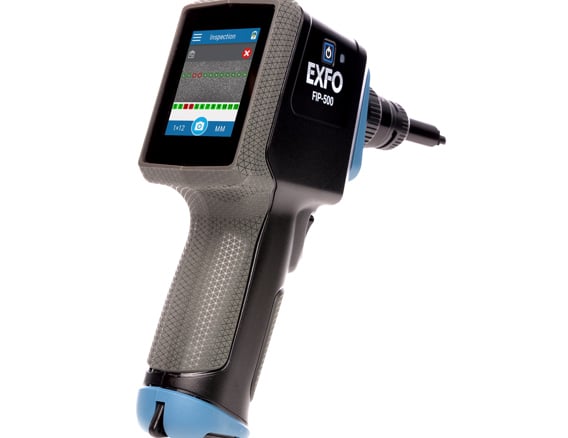A beginner’s guide to optical measurement system applications
Wiki Article
All You Required to Find Out About Robotic Vision and Its Applications in Advanced Optical Measurement Systems
Robotic vision stands for a considerable development in the junction of computer vision, expert system, and artificial intelligence. This innovation improves the precision of optical measurement systems, enabling real-time data analysis and improved quality assurance. Its effect covers multiple industries, from making to health care. The developing landscape of robotic vision raises concerns regarding future capabilities and applications. What innovations lie in advance in this transformative field?Understanding Robotic Vision: Key Concepts and Technologies
Robotic vision includes the modern technologies and methods that enable makers to analyze and understand visual info from their environment. This area incorporates aspects of computer vision, fabricated knowledge, and artificial intelligence to promote automatic decision-making based upon visual data. Secret ideas consist of photo handling, which involves the enhancement and analysis of pictures to remove significant attributes, and item acknowledgment, which permits makers to identify and categorize objects within a scene.
The Assimilation of Robotic Vision With Optical Dimension Equipments
As industries progressively require accuracy and performance, the combination of robotic vision with optical dimension systems has actually arised as a transformative technique. This synergy allows robotics to regard and interpret their environments, boosting the ability of optical measurement systems to assess and assess objects with unmatched accuracy. By outfitting optical sensing units with advanced imaging technologies, robotic vision makes it possible for real-time information collection and processing, assisting in instant changes to dimension criteria.In addition, the combination empowers automated systems to find variations in measurements, surface top quality, and alignment, which are critical in quality assurance procedures. Boosted formulas, such as artificial intelligence, further increase this assimilation by enhancing the systems' ability to adapt to various atmospheres and scenarios. The combination not just simplifies measurement procedures however additionally decreases errors, guaranteeing that items satisfy stringent market requirements, thereby solidifying the function of robotic vision in the future of optical dimension systems.
Applications of Robotic Vision in Production
In modern production environments, using vision systems has actually changed manufacturing processes by making it possible for equipments to carry out tasks with impressive accuracy and rate. Robotic vision systems are significantly employed for quality control, where they check products for problems and guarantee adherence to specifications. These systems make use of cams and advanced formulas to evaluate products in real-time, significantly decreasing the risk of human mistake.Furthermore, robot vision assists in automation in production line, allowing robotics to precisely determine parts and construct them with marginal downtime. This technology additionally improves supply monitoring, as vision systems can keep an eye on supply levels and spot discrepancies, ensuring a seamless supply chain.
Robotic vision help in the implementation of clever manufacturing facilities, where information from vision systems can be integrated with other technologies to optimize workflows (fibre testing equipment). In general, the applications of robot vision in manufacturing demonstrate its vital role in improving efficiency, quality, and efficiency across various fields
Robotic Vision in Medical Care: Changing Client Care

In rehab, robot vision help in monitoring client progression and tailoring therapy sessions to specific needs. It sustains doctor by automating tasks such as information collection and patient surveillance, enabling more time to focus on direct client communication. In addition, robot vision boosts telemedicine by enabling remote diagnosis and online examinations, linking the gap between patients and doctor. Overall, the application of robot vision in health care is changing client care, leading to improved results, effectiveness, and client complete satisfaction.
Future Patterns and Developments in Robotic Vision Modern Technology
The quick evolution of robotic vision innovation promises to better enhance its applications across numerous sectors, consisting of medical care. Future patterns suggest a considerable shift towards integrating expert system and artificial intelligence, making it possible for systems to gain from large datasets and boost precision gradually. Boosted sensing unit technologies and deep knowing algorithms are anticipated to refine item acknowledgment capabilities, permitting robots to interpret complicated settings better.
In addition, the assimilation of increased truth (AR) with robotic vision will likely reinvent how robotics help in surgeries and diagnostics. This synergy will facilitate real-time information visualization, improving decision-making processes. In addition, miniaturization of elements will result in more compact and flexible robotic vision systems appropriate for a variety of tasks. As these developments unravel, sectors will witness raised automation and performance, strengthening robotic vision as a keystone of ingenious technical solutions.
Often Asked Questions
What Are the Key Parts of a Robot Vision System?
The primary elements of a robotic vision system consist of electronic cameras for photo capture, processors for information analysis, algorithms for interpretation, and actuators for movement. Together, these elements enable robotics to view and interact with their environment successfully.Exactly How Does Robotic Vision Improve Accuracy in Measurements?
Robotic vision boosts measurement accuracy by using innovative imaging innovations, making it possible for precise object discovery and spatial analysis. This capacity minimizes human error, increases repeatability, and allows for real-time adjustments, inevitably improving overall dimension integrity and effectiveness.What Industries Benefit Most From Robotic Vision Modern Technology?
Various industries profit significantly from robot vision innovation, consisting of production, health care, agriculture, and logistics. These sectors use enhanced precision, performance, and automation, leading to improved performance and minimized operational prices in their particular procedures.Can Robotic Vision Solutions Job in Low-Light Issues?
Robotic vision systems can without a doubt operate in low-light conditions, utilizing sophisticated sensors and formulas to enhance photo clearness. This capacity enables them to carry out successfully in different settings, consisting of industrial and monitoring applications, despite having minimal illumination.What Are the Prices Related To Carrying Out Robotic Vision?
The expenses associated with implementing robot vision differ considerably, influenced by elements such as video cameras, software, and combination. Additional costs consist of upkeep, training personnel, and prospective upgrades to existing systems, which can build up over time.Report this wiki page